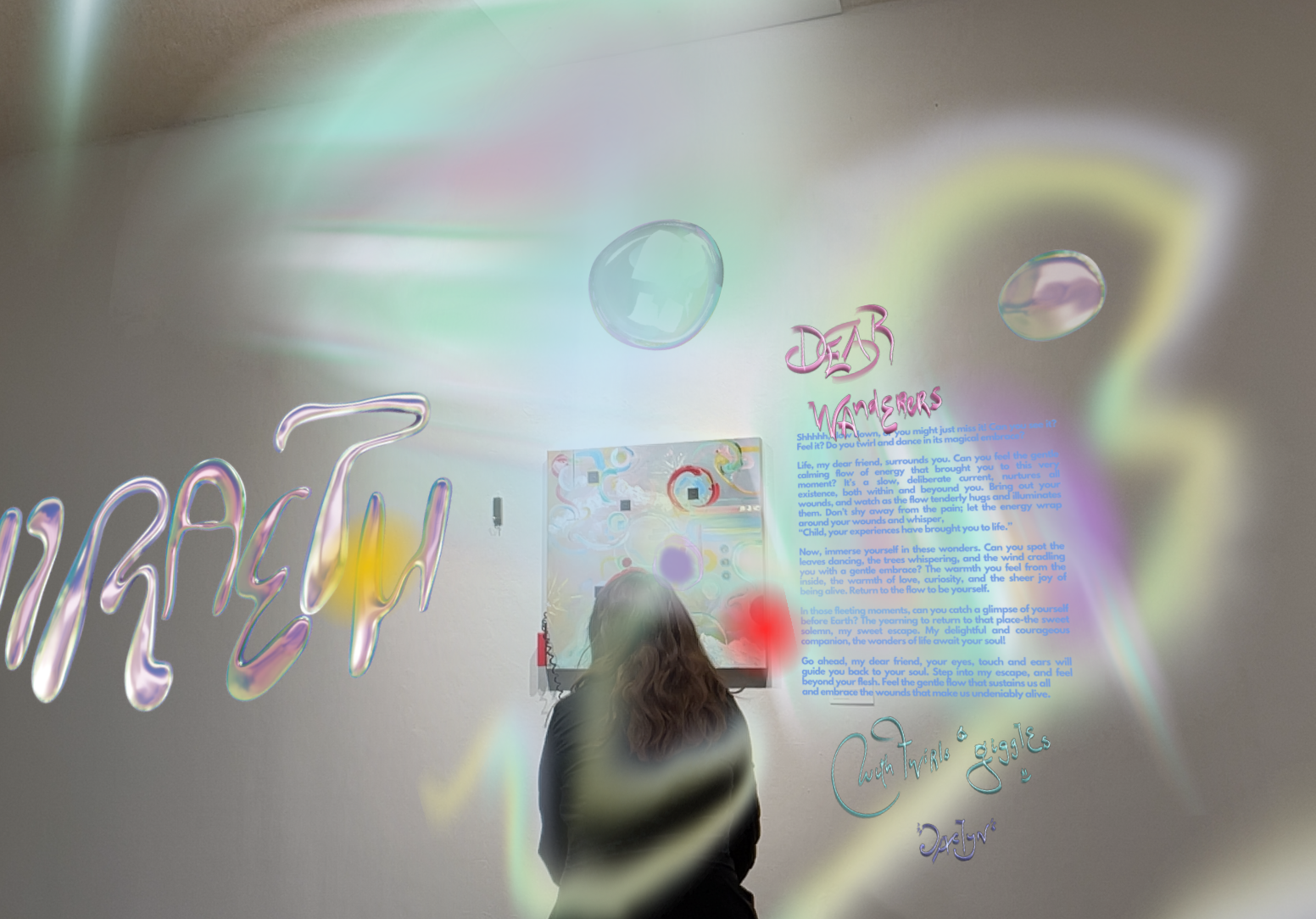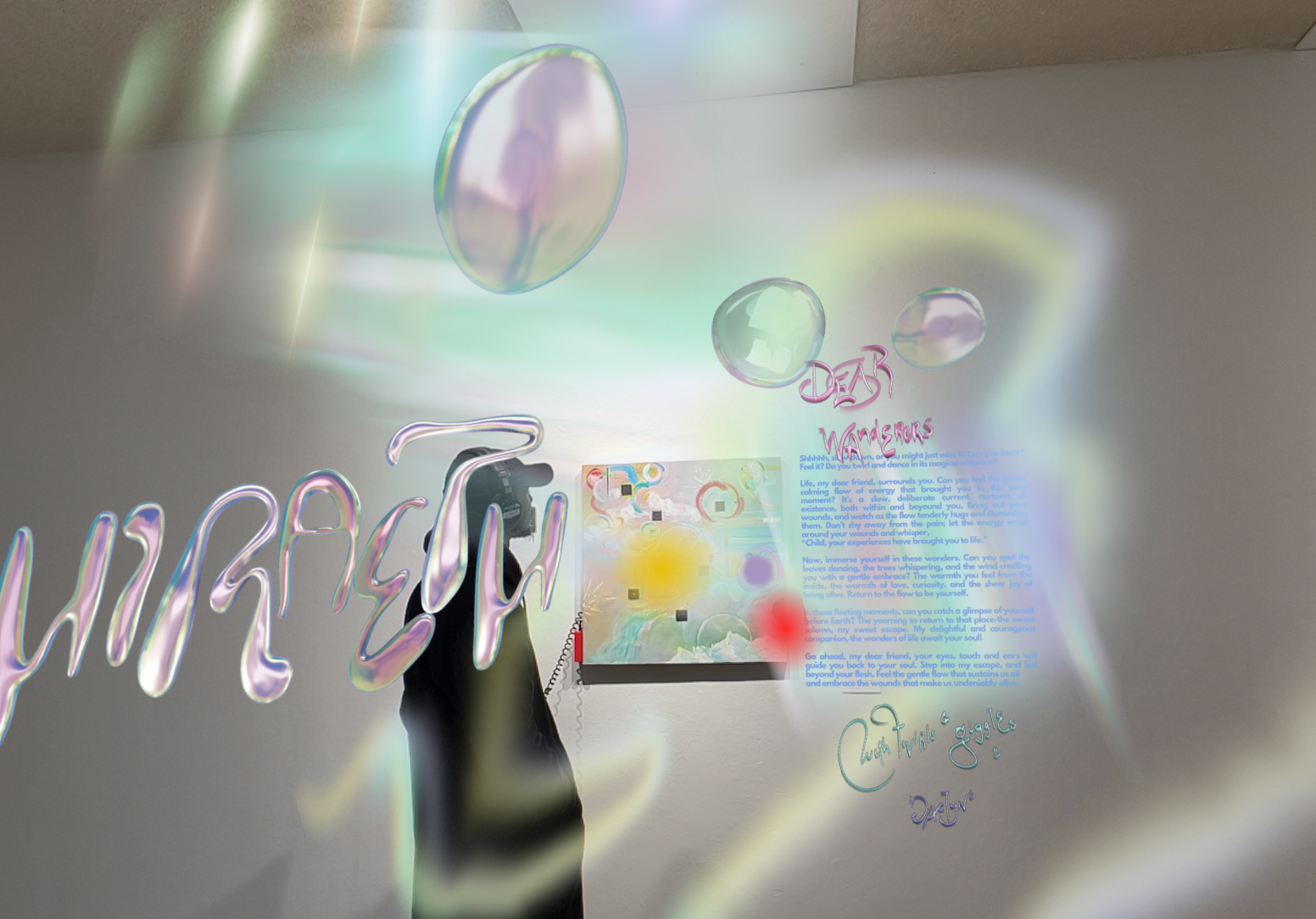Sound Meets Art
Case Study: Marshall Headphone
Responsibilities
UI/UX Design
AR Development
Sound Engineering
Hardware Engineering
AR Art
Tools
Paint: acrylic, electrical paint
Sound: Adobe Audition
Hardware: ArduinoIDE
AR: Adobe Aero
Timeline
September 2023 - December 2023
Disciplines
User Interface Deisgn
Augmented Reality
Interactive Art
Challenge
Marshall’s brand is built on a legacy of powerful sound and bold design, but the challenge was to allow users to experience the emotional depth of their music in a completely new way.
Our Vision
I created an immersive touch-sensitive painting paired with an augmented reality (AR) journey to highlight the essence of Marshall headphones: bold sound, dynamic energy, and a rich heritage.
Concept & Project Statement
The installation features a touch-sensitive painting that produces meditative sounds through interaction and an accompanying augmented reality journey that visualizes soundscapes in a way that’s immersive and experiential. The pop-up was designed to reflect Marshall’s philosophy of making sound a visceral, interactive experience while amplifying their commitment to innovation and artistry.
-
Each element was carefully designed to provde a seamless and multisensory experience:
The Painting: A fusion of acrylic and conductive electric paint allowed the artwork to serve as an interactive interface. Touch-sensitive areas connected via alligator clips and copper tape to a microcontroller board, enabling users to trigger pre-programmed sounds.The Sound: Using Adobe Audition, I created meditative water-drop-inspired audio files that varied subtly with each touch, creating a calming yet evocative auditory experience.
The Program: I wrote custom C code to program the microcontroller, ensuring precise sound responses to user interactions.
The AR Experience: Visual elements of the painting were extended into a digital space via Adobe Aero. A tablet displayed dynamic AR overlays, while QR codes allowed visitors to explore an expanded narrative of the artwork on their own devices.
-
Ideation:
Prototyping: I experimented with conductive materials to integrate touch sensitivity seamlessly into the painting, ensuring the visuals retained their aesthetic appeal while enabling interaction.Development:
Connected conductive paint areas to a touch board and microcontroller to process user inputs.
Designed and altered sounds for interactivity, aiming to evoke calm and reflection.
Built an AR layer to extend the storytelling into a three-dimensional space.
Testing & Iteration: I iteratively refined the interactions to create a fluid and intuitive experience, balancing visual design with tactile and auditory feedback.
Exhibition: Visitors engaged with the installation, touching the painting to produce soundscapes and exploring the AR journey through a tablet.
-
All participants actively interactied with the touch-sensitive paitning (100% enagagement), while 70% scanned the AR-enabled QR code, exploring the extended narrative on their devices.
the installation setup
Audience interacting with the painting
Painting made of acrylic conductive electric paint on wooden panel
My Key Takeaways
1. Less is More - by focusing on a few impactful sensory elements, I avoid overwhelming participants and ensured a harmonious experiece
2. Clarity in Interaction - experimental projects like this highlight the importance of clear instructions. Without guidance, participants can feek hesitant to engage



